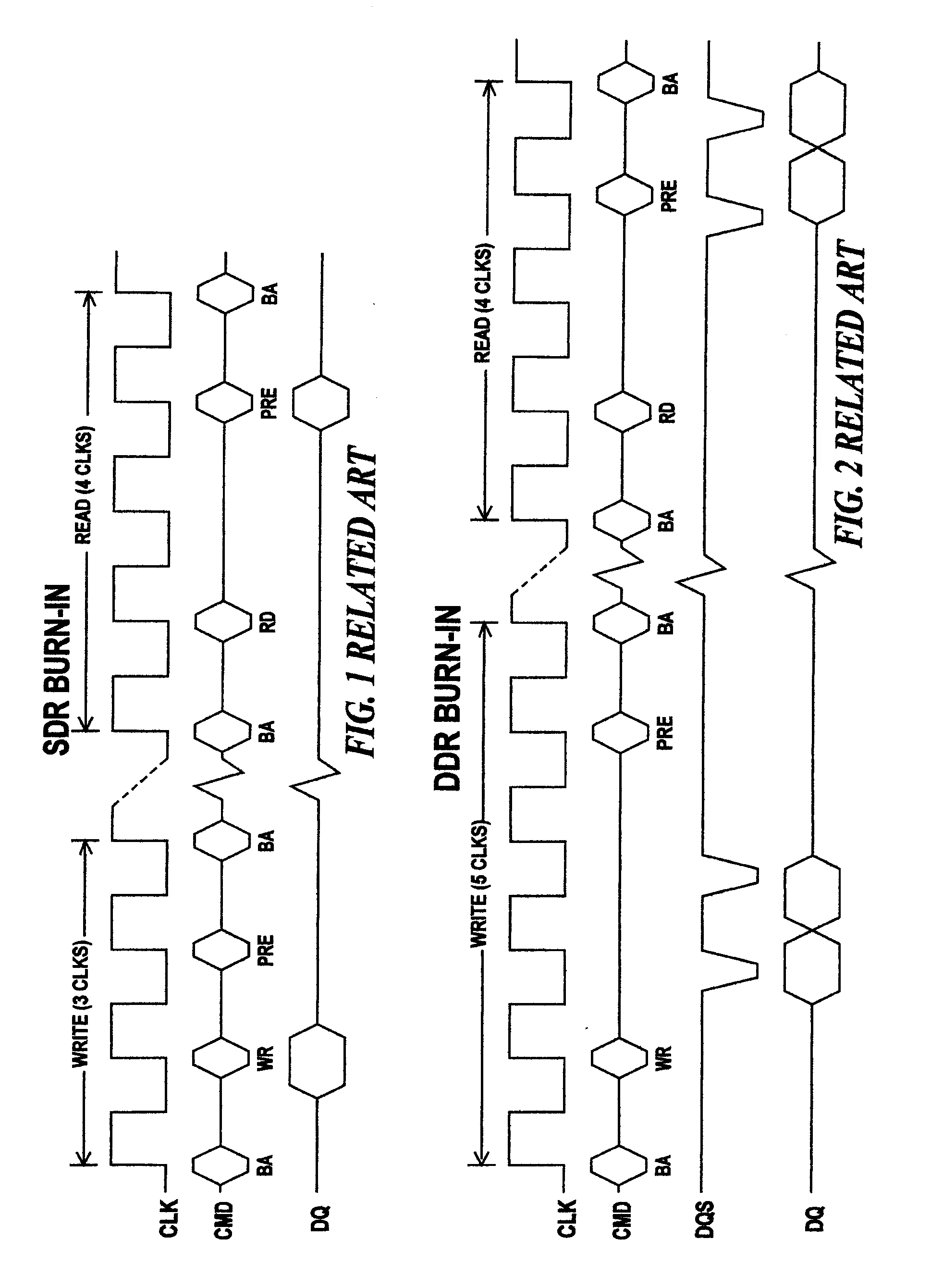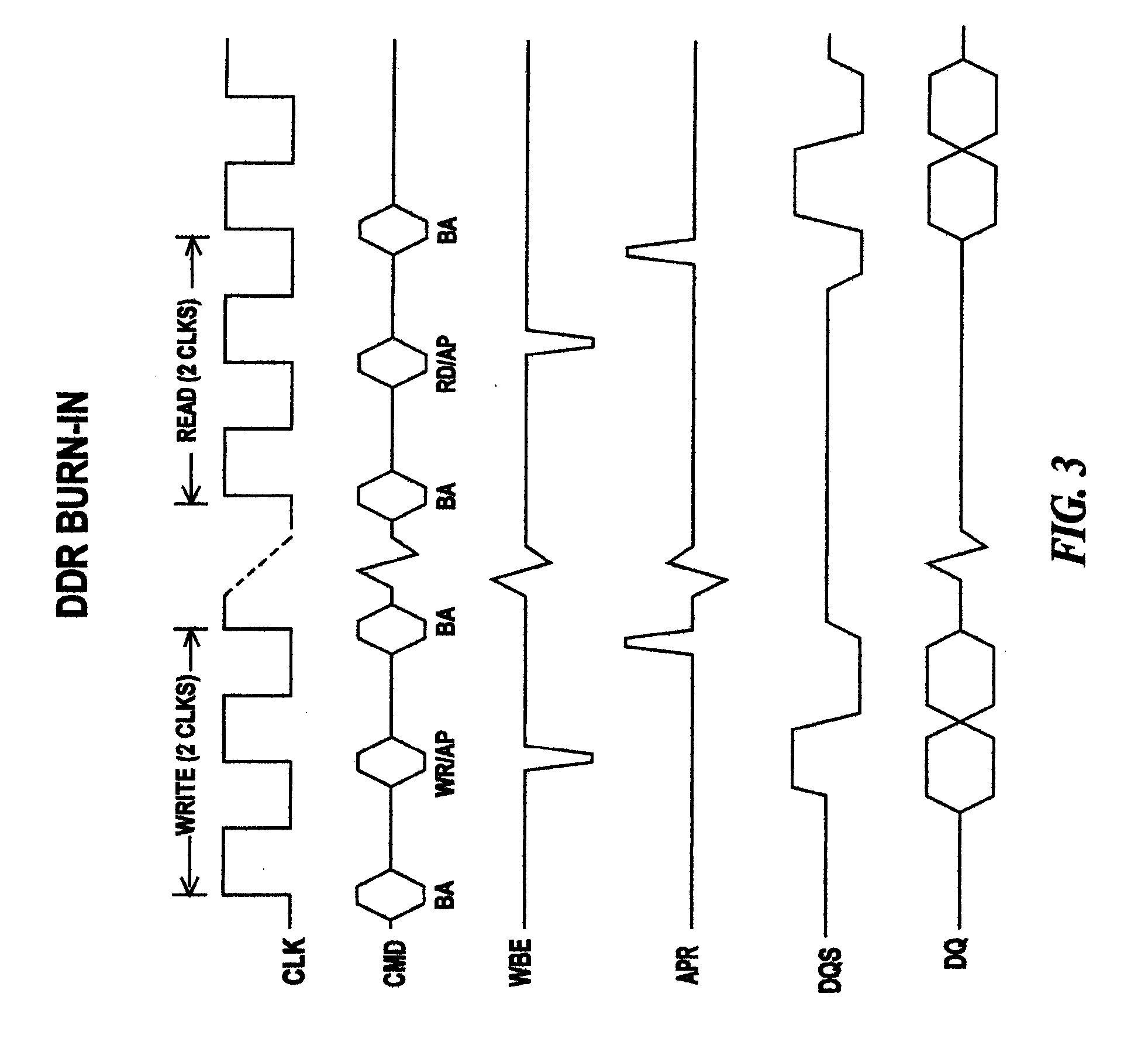Method for performing a burn-in test
a burn-in test and burn-in technology, applied in the field of integrated circuits, can solve the problems of generating false failures, significantly longer time, and exceeding the retention time specification of dram cells
- Summary
- Abstract
- Description
- Claims
- Application Information
AI Technical Summary
Benefits of technology
Problems solved by technology
Method used
Image
Examples
Embodiment Construction
[0012] Cells in a DRAM are arranged in a two dimensional matrix, with rows being accessed by wordlines and columns being accessed by bitlines. A typical DRAM cell consists of an N channel field effect transistor (NFET) transistor and a storage node (usually a capacitor). The gate of the NFET is connected to a wordline, the drain to a bitline, the source to a first plate of the capacitor and the second plate of the capacitor is connected to a low voltage, usually to ground. Sense amplifiers on each bitline sense the presence of stored charge (a logical 1) on the storage node of a DRAM cell when that cells wordline is turned on.
[0013] Operation of a DRAM in SDR / DDR mode is covered in the JEDEC Standards SDRAM3—11—05 / JESD97 specification. The circuit design to meet this specification varies from manufacturer to manufacturer.
[0014] Burn-in testing of DRAMs is designed to provide accelerated fail of cells during test that would otherwise fail subsequently. Acceleration is accomplished ...
PUM
 Login to View More
Login to View More Abstract
Description
Claims
Application Information
 Login to View More
Login to View More - R&D
- Intellectual Property
- Life Sciences
- Materials
- Tech Scout
- Unparalleled Data Quality
- Higher Quality Content
- 60% Fewer Hallucinations
Browse by: Latest US Patents, China's latest patents, Technical Efficacy Thesaurus, Application Domain, Technology Topic, Popular Technical Reports.
© 2025 PatSnap. All rights reserved.Legal|Privacy policy|Modern Slavery Act Transparency Statement|Sitemap|About US| Contact US: help@patsnap.com



